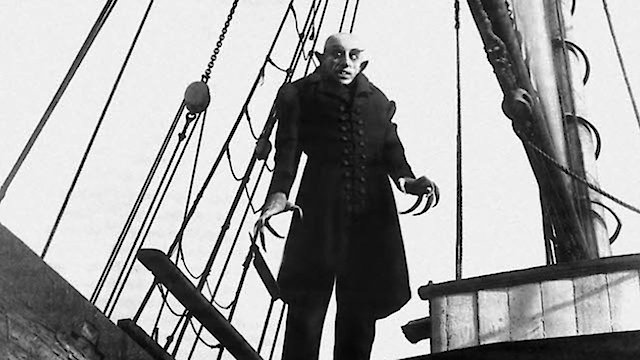
Nosferatu
Where to Watch Nosferatu

Nosferatu, a timeless piece of cinema history from acclaimed German director F. W. Murnau, first saw the light of day—or perhaps more fittingly, the dark of night—in 1922. Starring Max Schreck, Alexander Granach, and Gustav von Wangenheim, this silent horror film is one of the pioneering works of the genre.
The film's plot is rooted in Bram Stoker’s magnum opus, 'Dracula', albeit with a few alterations drenched in computed shadows and attenuated tweaks to the characters' names, perhaps due to copyright concerns of the era. Yet, the parallel undertones and symbolic cues pin it back to its grand antecedent. Nosferatu is notably one of the first films to introduce audiences to the vampire mythos on the big screen, paving the way for an enduring fascination with stories about these blood-sucking creatures of the night.
Max Schreck incarnates Count Orlok, the titular Nosferatu, the pallid vampire reminiscent of a somber walking cadaver with his bony fingers and sunken eyes. Orlok exhibits an eerie elegance in his horrific nature—a testament to Schreck's performance—that has made him one of the most enduring monsters in cinematic history.
Gustav von Wangenheim plays the polite and naive Hutter, a real estate agent sent to Transylvania by his merciless employer, Knock, to sell a property. Knock is an eccentric, shifty character with a peculiar interest in the paranormal, brought to life by Alexander Granach. This trio encapsulates the essence of Stoker’s universe while spawning their distinct, memorable profiles.
The segmented narrative of Nosferatu transports viewers from the idyllic German town of Wisborg to the macabre castle of Count Orlok in Transylvania. The use of real locations adds a wealthy layer of authenticity to the narrative. Each scene is meticulously decorated with Gothic motifs, capturing the threatening ambiance of vampire lore in its authentic, antiquated essence.
What sets Nosferatu apart from the films of its era is the use of techniques such as double exposure, stop motion, and variable frame rates to portray supernatural elements. For a film of this vintage, these primitive special effects dazzle with their effectiveness and simplicity, bestowing a certain surreal charm unique to its era and genre.
Stunning symbolism is strewn across this atmospheric piece: a ship helmed by a dead man navigating through the mist, a swarm of rats symbolizing the impending plague, and the marauder shadows, creeping to allure the innocent. This aesthetic, in resonance with the era's German expressionism, is carefully constructed to evoke strong emotions.
The lack of dialogue doesn't hinder the viewers’ understanding or enjoyment as title cards judiciously intersperse scenes, guiding the narrative. But, it's the characters' exaggerated expressions typical of silent cinema that truly communicates the story's emotional core and dramatic tension.
Complementing the visuals is the haunting musical score. Like all silent films, Nosferatu was initially designed to be accompanied by live music. Over the years, many composers have set out to create the perfect soundtrack for this eerie tale. These scores, depending on the version viewed, oscillate between eery minimalism and symphonic grandeur, amplifying the atmospheric visuals.
Another intriguing aspect of Nosferatu is its unabashed undertone on the anxiety of foreign invasions, epidemic pandemics, and emerging societal fears of the times, thus persisting its relevance over the century.
Despite initial critical reception leaning more towards outrage and confusion due to its esoteric storytelling, Nosferatu has since been reevaluated and honored for its artistic triumph. It's a lasting testament to silent cinema—a relic retaining its power to unsettle, disturb, and fascinate viewers in equal measure, almost a hundred years after its initial release.
Nosferatu remains a significant milestone in film history, thanks in part to Schreck's chilling performance and director Murnau's trailblazing techniques. It's more than just a vampire flick; it's a grim folktale turned celluloid, a visual poem, an exploration of universal themes, and a reminder of cinema's early experimentation with genre. In essence, Nosferatu is a hauntingly beautiful revenant of the silent era, that continues to inspire and set a benchmark for horror films today.
Nosferatu is a Horror, Fantasy movie released in 1922. It has a runtime of 84 Critics and viewers have rated it mostly positive reviews, with an IMDb score of 7.8..
How to Watch Nosferatu
Where can I stream Nosferatu movie online? Nosferatu is available to watch and stream, buy on demand, download at Prime Video, Prime Video, Prime Video, Amazon. Some platforms allow you to rent Nosferatu for a limited time or purchase the movie for downloading.
